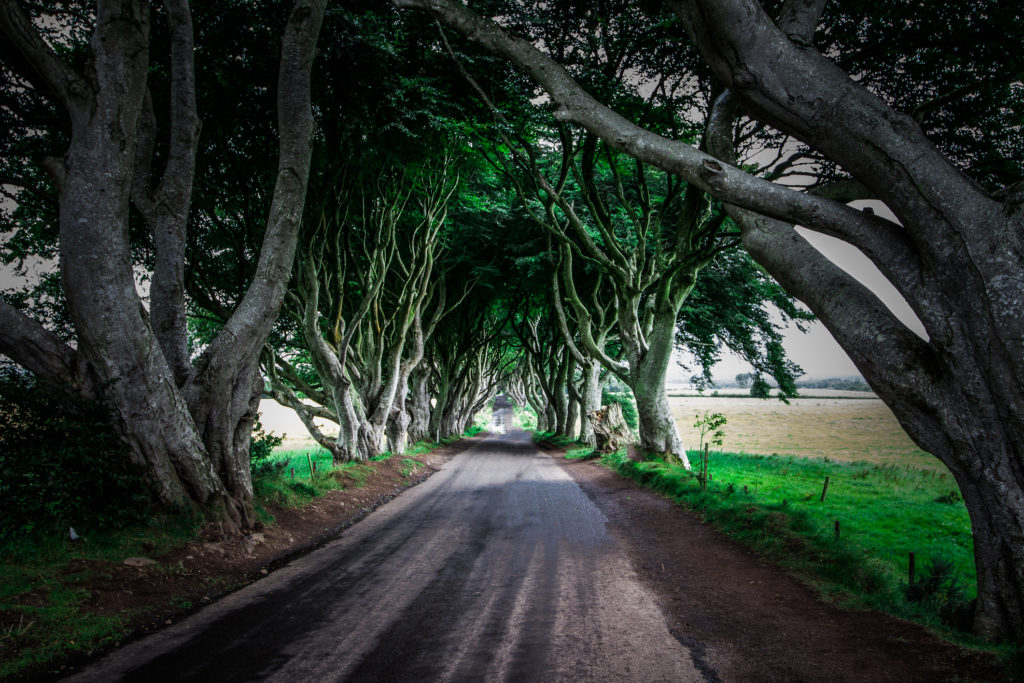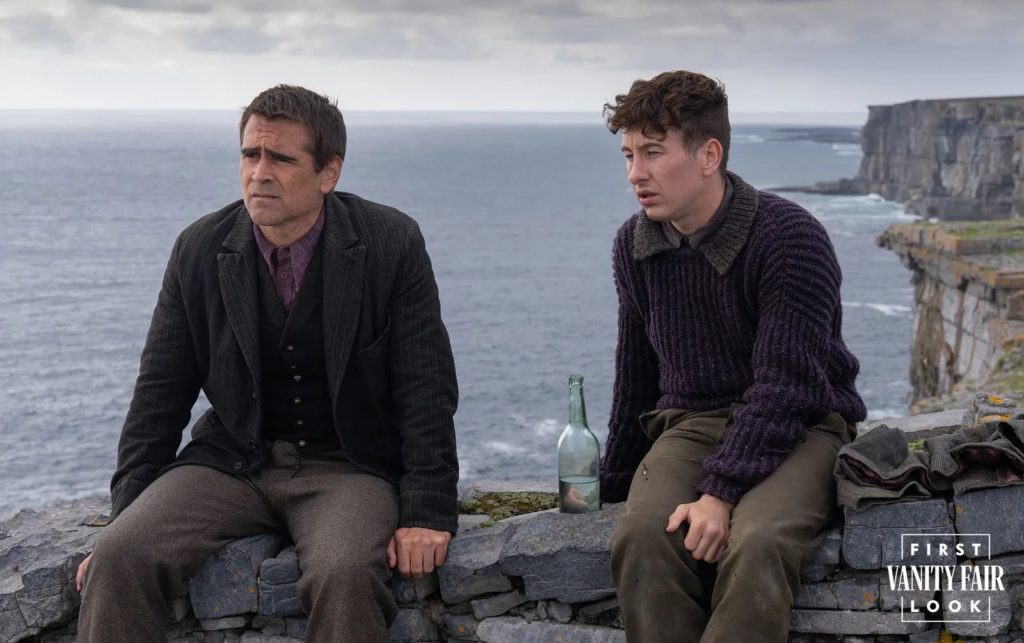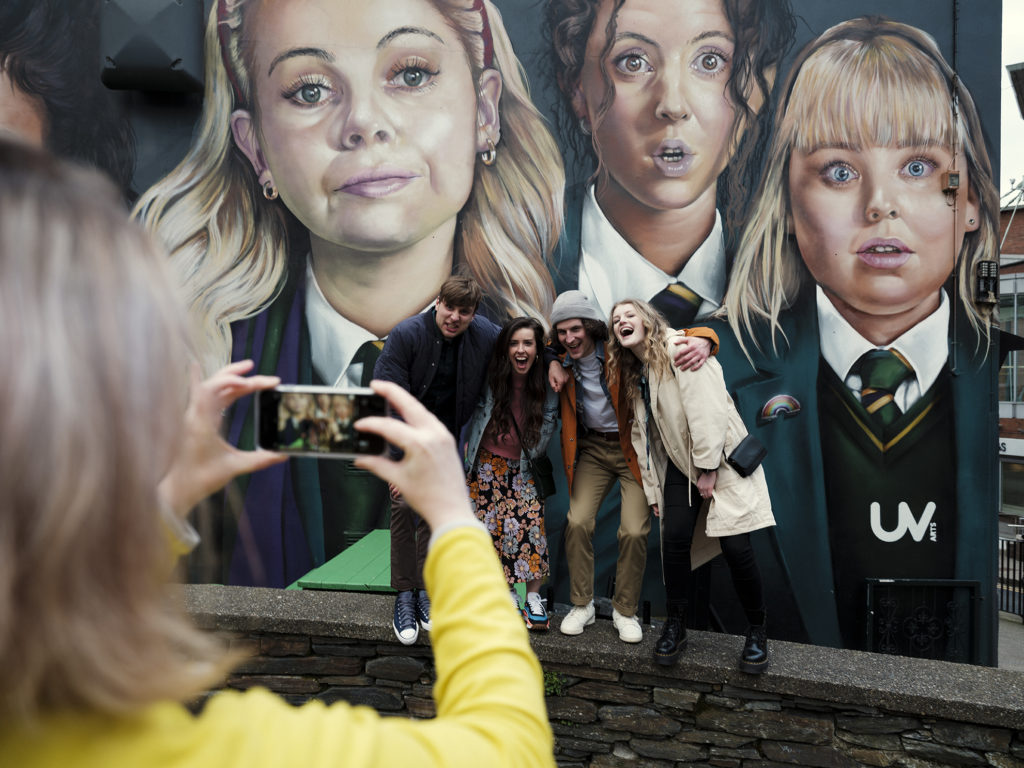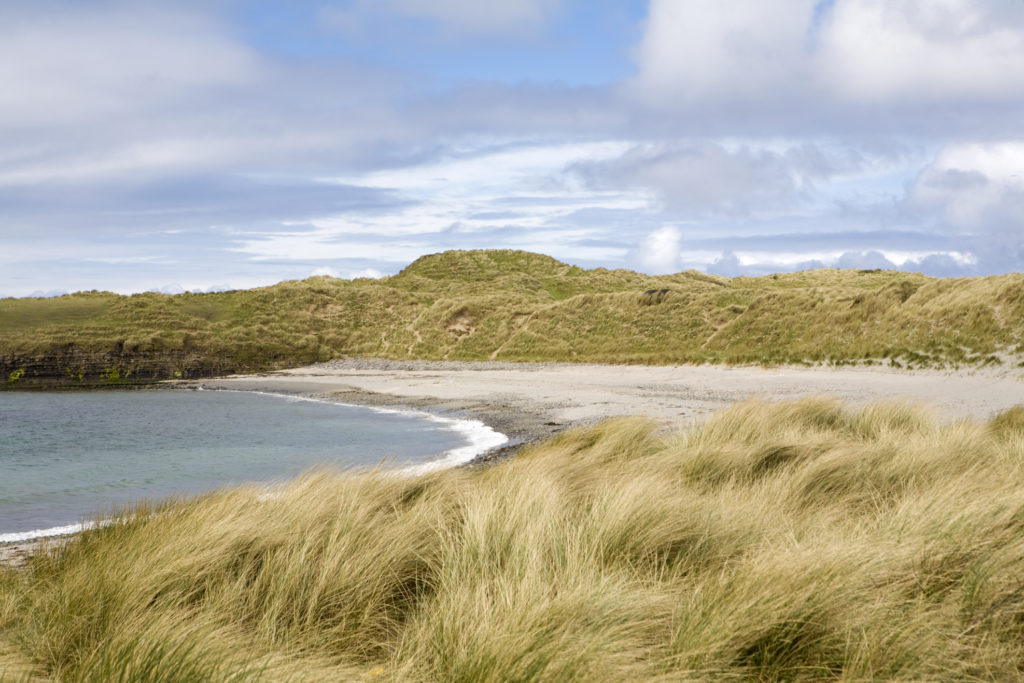Brought to you by Tourism Ireland. Coming to Ireland for New Year's? Be sure to book an unforgettable New Year's Eve in Dublin by visiting www.nyfdublin.com
THE dramatic scenery of Ireland has been used in hundreds of films and television series from Harry Potter to Moby Dick, and from The Tudors to Star Wars.
The Irish film industry has a long history, but one production set in Co. Mayo stands out. It begins: “A fine soft day in the spring it was when the train pulled into Castletown, three hours late as usual, and himself got off. He didn’t have the look of an American tourist at all about him. Not a camera on him. And what was worse, not even a fishing rod.”
Yes, The Quiet Man. The quintessentially Irish countryside of Mayo became the backdrop for a Hollywood postcard evocation of Ireland, and nearly 70 years later Americans, film buffs and movie-tourists continue to make pilgrimages to the area.
One of the first colour films ever to be shot outside of North America, The Quiet Man brought a vast amount of crew alongside the cast to picturesque filming locations in the west of Ireland – with Galway also featured.
So impressed were the US production team with their surroundings that many returned to Ireland with their families once filming had finished.
Oh, and if you want a supreme piece of trivia, try this one for size: the song the Isle of Innisfree is featured in both The Quiet Man and E.T.
In the latter, ET is sitting watching The Quiet Man on television, with Dick Farrelly singing “especially when it happens he’s an exile,/from that lovely Isle of Innisfree.”
 This is the dark hedges used in the show Game of Thrones
This is the dark hedges used in the show Game of ThronesRyan’s Daughter probably shares equal billing with The Quiet Man as providing some of the most resounding images in Ireland’s cinematic history. On the Dingle Peninsula an entire village was recreated among the patchwork of fields near Dunquin.
Saving Private Ryan was filmed on the sands of Curracloe Beach, with Co. Wexford masquerading as Normandy and Irish soldiers playing the part of GIs.
750 soldiers from the same Irish Defence Forces played extras in the battle scenes of Braveheart.
The be-kilted bottoms, bared in one of the most memorable scenes in the film, were, to a cheek, Irish behinds. Although set in Scotland, much of the action was filmed on the Curragh in Co. Kildare – another hotspot on the Ireland’s Ancient East trail.
Dublin has often acted as a film set. Trinity College was immortalised in Educating Rita, and the city even pretended it was its country cousin Limerick for Angela’s Ashes. Neil Jordan’s Michael Collins featured large chunks of the city, while The Commitments showed another side of the metropolis.
It’s fair to say that film fans have plenty to choose from in Ireland, particularly followers of the epic Star Wars franchise, with the island’s Wild Atlantic Way providing dramatic backdrops for both Star Wars Episode VII – The Force Awakens and Star Wars Episode VIII – The Last Jedi.
“May the craic be with you,” said the t-shirts, accompanied by a picture of Skellig Michael. These became a common sight in the queues amongst people waiting for boats heading out towards the Skellig Islands in 2016.
The reason was simple enough: Rian Johnson’s space-opera sequel Star Wars Episode VIII — The Last Jedi was extensively filmed on the westerly outreaches of Co. Kerry to the northerly tip of Donegal.
Star attraction amongst the film locations was Skellig Michael or Sceilig Mhór.
One of Ireland’s three UNESCO Heritage Sites, the small island was, 1500 years ago, home for an early Christian settlement. The Skellig monks, should they have gone to their anticipated rewards in the afterlife, will undoubtedly have looked down on their former island home with incomprehension tinged.
The filming of the Star Wars epic originally announced as Star Wars: The Last Jedi must have utterly perplexed them.
As well as the consistently popular boat tours bringing film fans around the Skelligs, further Star Wars filming locations that are well worth a visit include Loop Head in Co. Clare, Malin Head in Donegal and Ceann Sibéal (Sybil Head) in Ballyferriter, Dingle, Co. Kerry.
 Colin Farrell and Barry Keoghan in 'The Banshees of Inisherin'.
Colin Farrell and Barry Keoghan in 'The Banshees of Inisherin'.And this year, the Ireland-set film The Banshees of Inisherin is receiving rave reviews and is hotly tipped for Oscar success.
It is the latest film from acclaimed writer and rector Martin McDonagh, best known for the film In Bruges.
This drama/comedy is set and filmed in Ireland making use of the beautiful scenery and acting talent Ireland have to offer.\
Inisherin, the setting of the film is a fictional village portrayed using other Irish towns, namely on the islands of Inis Mor and Achill Island.
The film shows the beauty of the Wild Atlantic Way and the West coast of Ireland in particular. Director Martin McDonagh said they wanted to make the most beautiful Irish film they could and with the amazing scenery shown in the film it shows.
THE SMALL SCREEN
In these days of box sets, television productions have reached the same status as the biggest Hollywood blockbuster – and none are bigger than Game of Thrones. Some of the most famous scenes in the series were filmed in Northern Ireland at breathtaking sites such as Dunluce Castle on the Antrim Coast, and amongst the Gothic curios of Tollymore Forest in Co. Down.
As a result, Northern Ireland has become something of a mecca for Game of Thrones fans – with plenty of activities and attractions related to the epic series to keep them coming back again and again.
Among the GOT hotspots are The Dark Hedges, near Armoy in Co, Antrim, which became the Kings Road, where Arya disguised herself as a boy to avoid capture. But captured she was, and dragged to the Brotherhood without Banners’ hideout, otherwise known as Pollnagollum Cave in Co. Fermanagh.
For those looking for a true GOT experience on their travels, why not try a Winterfell Tour, a Meet the Direwolves Tour or feast on a Stark banquet on a Medieval Banquet Night.
There is also a pretty impressive Game of Thrones Tapestry located at the Ulster Museum in Belfast, which details scenes from every series and is a must see for anyone who is a GOT fan.
Before Game of Thrones there was Ballykissangel. Its mixture of whimsy, striking scenery, and stories of gentle intrigue in rural communities gripped audiences in Britain and Ireland.
A sort of ‘Last Of The Summer Guinness’, Kieran Prendiville’s story of an English priest abroad in the village of Ballykissangel attracted 15 million viewers when it first hit the screens in the 1990s.
 Friends enjoying the Derry Girls walking tour in Derry.
Friends enjoying the Derry Girls walking tour in Derry.
That represented more than half the British viewing public, and turned the Co. Wicklow town of Avoca into a top telly-tourist destination overnight.
Father Ted, filmed in the west of Ireland, had a simple enough plot – a bunch of priests who never quite got the hang of sobriety, penury or several other priestly requirements were exiled to a remote island. But from the opening bars of the theme music – Songs of Love by Divine Comedy – audiences on either side of the Irish Sea were captivated. Father Ted, as well as being jocular, went for the jugular too.
While Derry-Londonderry is always a great place to visit, it has become increasingly popular since the arrival of the hit comedy series Derry Girls. Set in the mid-90s audiences can’t get enough of 16-year- old Erin, her friends and her family. So there is every reason to go and see their stomping ground for yourself.
Take a tour of city, visit the Derry Girls mural or walk in the footsteps of Erin and the gang on a Derry Girls guided tour.
 Remote empty cove on the Atlantic Ocean in Sligo, Ireland, made famous by scenes from Normal People.
Remote empty cove on the Atlantic Ocean in Sligo, Ireland, made famous by scenes from Normal People.Normal People took the world by storm in the early months of 2020, launching the careers of Irish actor Paul Mescal and making writer Sally Rooney a household name.
The story follows two teenagers who fall in love as they go from school in Sligo to university in Trinity College, Dublin.
Set in the fictional town of Carricklea in Co. Sligo in northwest Ireland and filmed in some beautiful locations, the show gone down a storm across the globe.
Locations include the little-known ton of Tobercurry in Sligo, with memorable scenes including local pubs and churches. Streedagh Beach sets the backdrop to Marianne and Connell's romantic walks, while Trinity College in Dublin comes to life in late-night study scenes at Berkeley Library and the famous Campanile which marks the centre of the campus.

